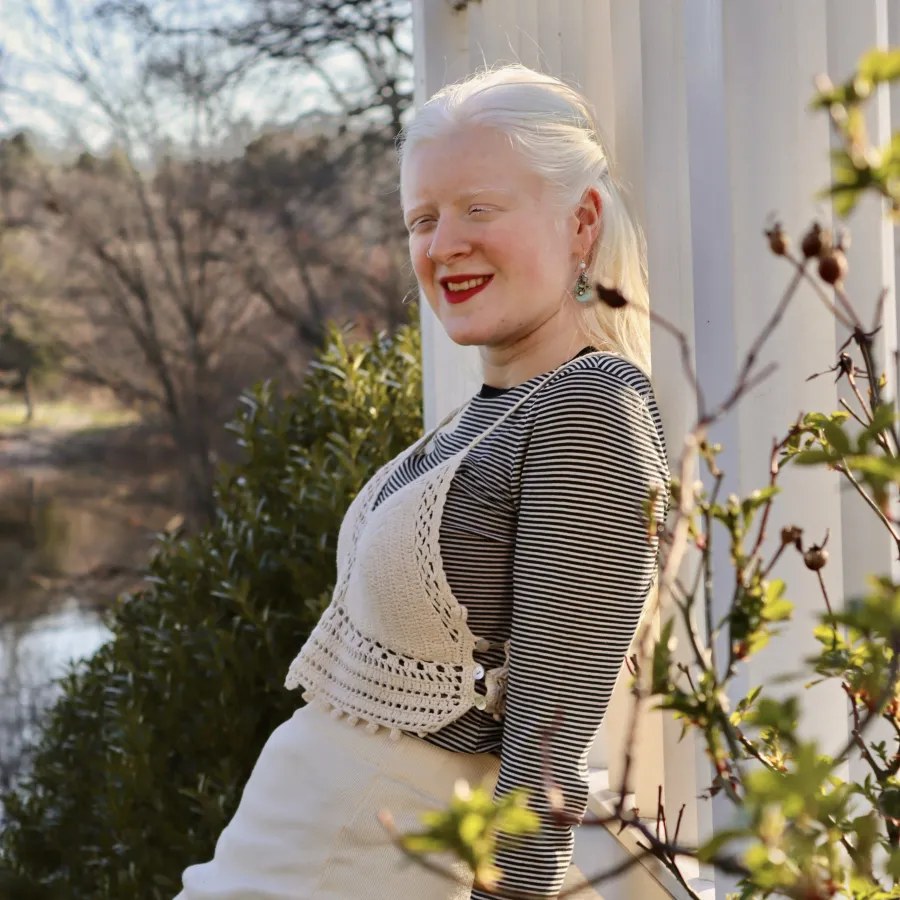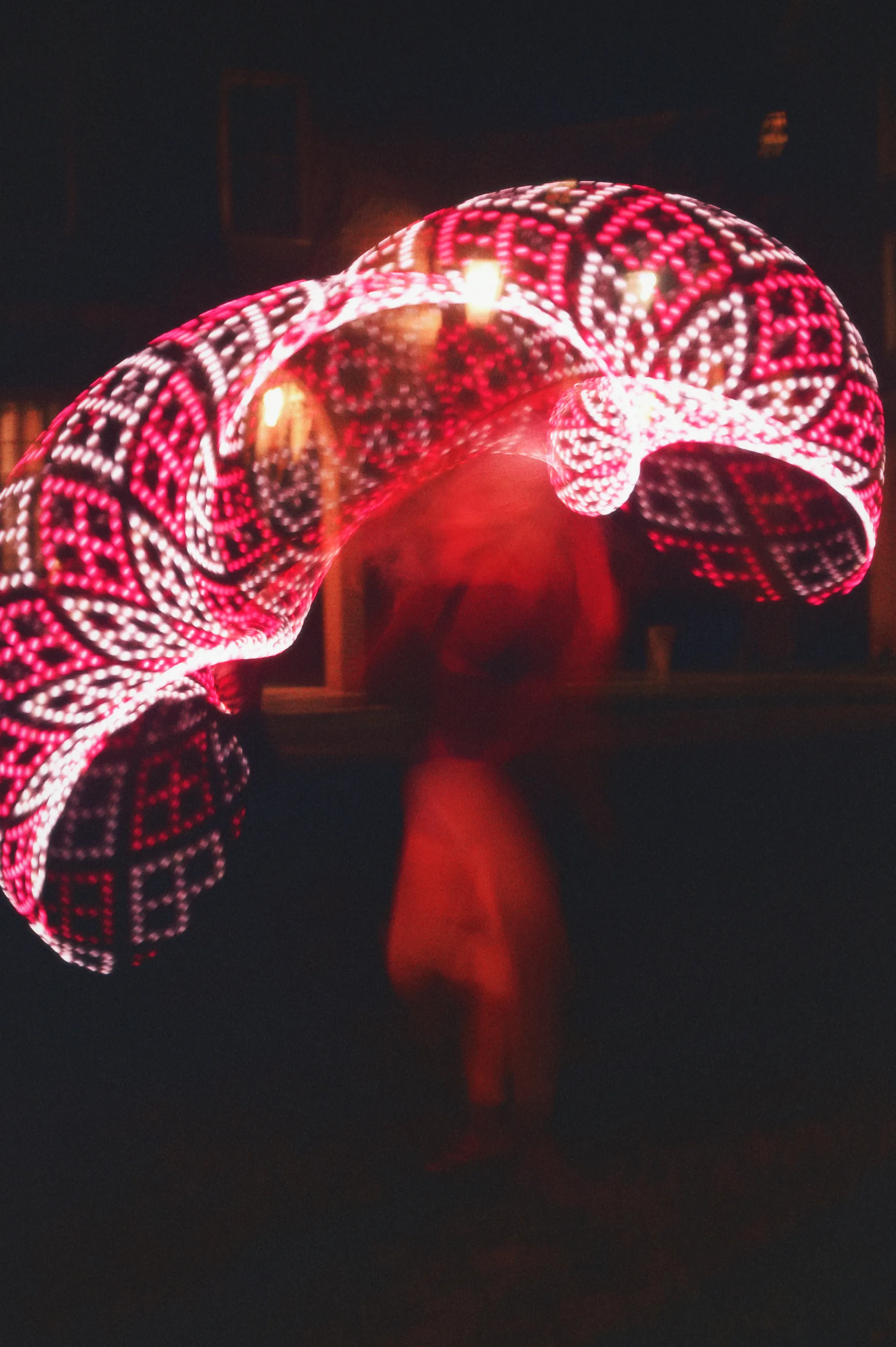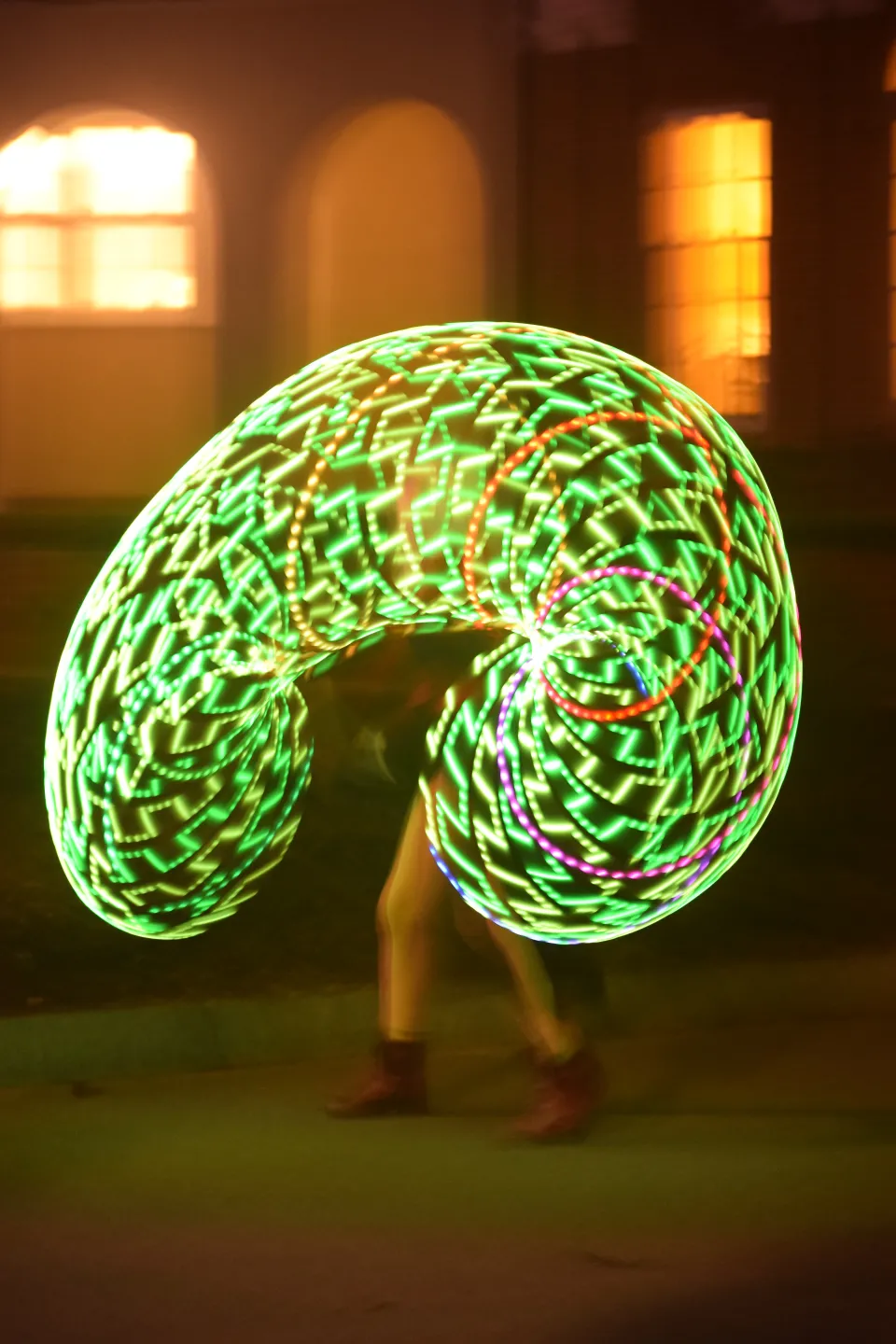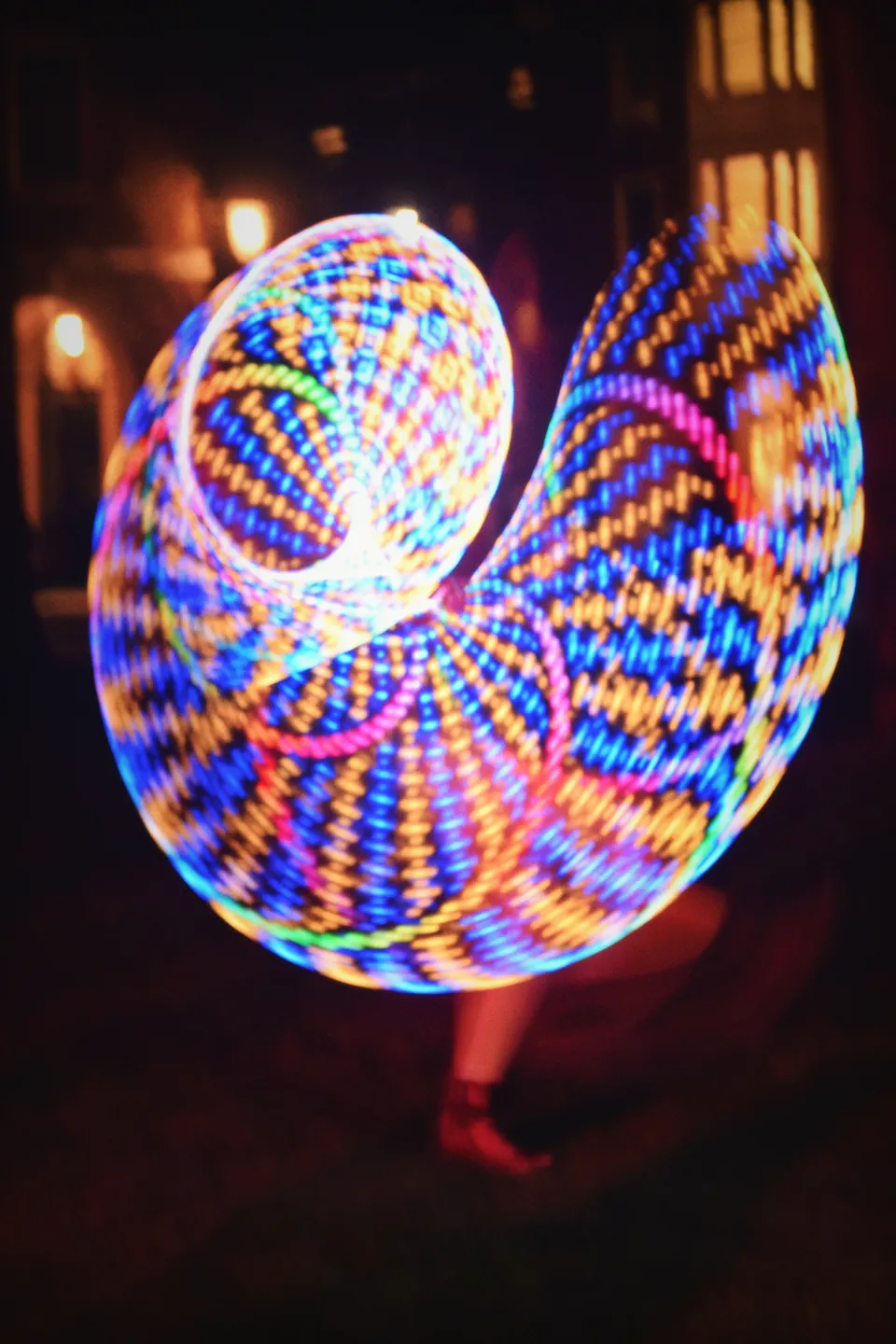Una Fonte Comes Full Circle
Students
In hula hoop dance, a legally blind student finds self-confidence and ‘radical joy.’
Photograph by Liliana Hetherman ’25
Published July 18, 2024
Una Fonte ’26 is many things: an environmental science and policy major, one of the co-founders of the Smith disability justice student advocacy and support group Dis-Organizing, and an advocate for the wide range of people who, like her, have some form of legal blindness or visual impairment. But it is in the “flow art” of hula hoop dance, which she both practices and teaches, that Fonte says she finds a “sense of radical joy.”
Fonte first dipped a toe into the practice of hula hoop dancing while attending middle school in Ferrisburgh, Vermont. Thinking she was signing up for dance class, she mistakenly enrolled in an after-school hula hoop class, a program offered under the 21st Century Community Learning Centers (21st CCLC) grant initiative, and began a journey of discovering more about both the art form and her own sense of self. Below is her story.
I love flow art. I do hoops, and I do silk fans. They all kind of intersect. Once you know one, you know the basics of the others.
I originally got into hoop dance. I’d begged and begged my mother for dance classes for years. I’m from the rural middle of nowhere, and it would have been an hour’s drive. She would have had to get out of work early. It wasn’t happening.
So, my [middle] school suddenly got this amazing after-school program called Fusion, where you could sign up for any class you wanted for free. It was a [21st CCLC] grant for schools to fund after-school programs.
All I saw was the word “dance,” and I signed up. When the program started, it was just middle schoolers. Initially, it was a lot of basic intro moves. There were also a lot more people when I first started going. Every class, one fewer person would come.
Eventually, it’s just me and one other friend and people who circle in and out. I had this woman who was an amazing mentor named Rebecca. She would always start with a check-in: “How are you doing? How are you feeling?” As I got more advanced, it would be like, “Here are the moves. We’re going to practice this combination together.” And as you practice, you breathe, you meditate, you talk.
“Your body is a joyful thing that you can create gorgeous illusions with,” says Fonte.
I’m legally blind. That’s another thing I really like about hoop dance: It’s not about how you see something, it’s about how you feel something. And you can very easily just close your eyes and dance.
Blindness is a spectrum. The cultural perspective of blindness is total blackness, but that is less than 10% of the actual blind population. Wherever the legal cutoff is between severely visually impaired and blind, I fall right below that cutoff. I have albinism, which is a genetic condition where your body goes, “Hmm, we don’t need to produce pigment.” Hence the white hair. It also affects vision and gives you nystagmus and uncorrectably poor vision.
Through dance, I learned how to grow self-confidence and creativity, which is so crucial in that middle school year where you’re like, “I hate myself and I hate the world and everything sucks.” But I had an amazing person who taught me, “It’s OK, you don’t hate yourself. You don’t hate the world. Sometimes things suck, but not all the time.”
It made me ask myself why I wanted to fit in. How boring would it be not to do this thing? People think, “That’s a little weird.” But I like this so much that I don’t care. It also made me ask myself why anyone would judge someone for something that brings so much joy.
Back in middle school, I wasn’t thinking of it in these liberatory terms, but I knew I was joyful and I knew in a lot of places I wasn’t. My high school was relatively homogeneous, and I’m disabled. I’m queer. I was queer and not out. Having this thing that could be mine, that I could feel joyful about and didn’t feel like I had to hide, was really powerful at that time.
Now, as I’ve gotten older, I like sharing it with other people and teaching people that your body is not a bad thing. Your body is a joyful thing that you can move with and create these gorgeous illusions with, and you can move it in ways that feel good and strong and beautiful and delicate and handsome and whatever you want. Your body is not something to be hated, not something to be oppressed, not something to be controlled by others. It is yours. And when you hold control over it and feel joy in your body, your presence, your space? That is really, really powerful.
Photography by Emily Kim ’25



